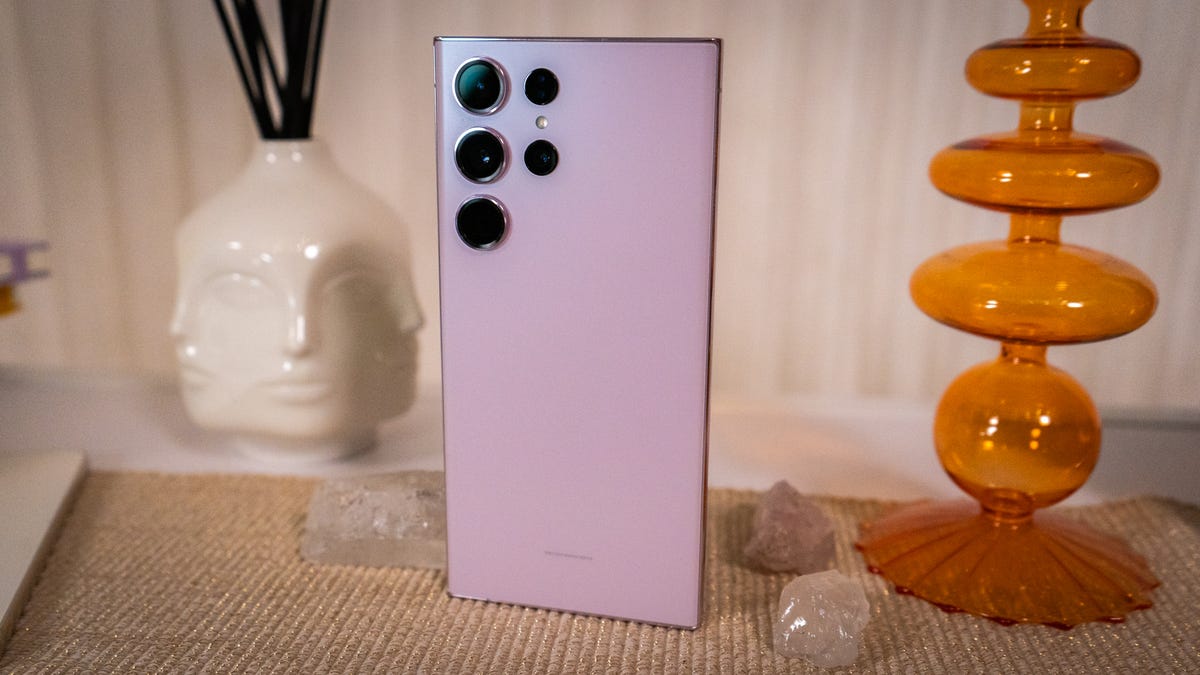
Samsung has officially revealed its flagship lineup for the year. The Galaxy S23 Ultra, S23, and S23+ will go on sale on Feb. 17. Each phone starts at a different price point, with the Ultra being the ultimate model. The Galaxy S23 and 23+ will also pack punches of their own, and they’re looking more refined compared to the last generation. Let’s get into what’s new about Samsung’s smartphones.
Samsung Galaxy S23 Ultra: The “ultimate” in Samsung
If you want to spend a good chunk of money on Samsung’s most equipped smartphone, look no further than the gigantic Galaxy S23 Ultra. The S23 Ultra is the largest smartphone in the lineup, with the highest specifications in the Android world (at least in the U.S.). The Ultra is modeled after the sunsetted Galaxy Note series, down to the stowable stylus on the chin of the device. It starts at $1,200.
This year’s Galaxy 23 Ultra hails the same screen size as last-gen: a 6.8-inch AMOLED display with a QHD+ resolution. I’ve always been a fan of Samsung’s displays for binge-watching on a small screen—compared to a living room TV—and the Ultra is bound to be no different. Even with my short time with the Ultra in person, I could see this being a “second screen” for my desk. But will it be enough to entice me away from the Z Fold 4’s current role in my life? More on that in Ultra’s review.
The display has a maximum brightness of 1,750 nits in direct outdoors—think Pokémon Go in the afternoon sun—as well as a 120Hz adaptive refresh rate during standard use and up to a 240Hz one in gaming mode.
G/O Media may get a commission


Inside, the Galaxy S23 Ultra is powered by the latest generation of Qualcomm’s Snapdragon 8 Gen 2 processor. It’s paired with 8 GB of RAM and 256 GB of storage in the base model, but is available with up to 12 GB of RAM and up to 1 TB of storage.
There’s also a 5,000 mAh battery pack stuffed in there. Last year’s Galaxy S22 Ultra had the same battery size, but it lasted only 16 hours compared to the iPhone 14 Pro Max’s complete 24-hour offering. It’ll be interesting to see what Samsung has done on the software side to help extend that battery. The company boasts the new model will last 20% longer than last year’s Ultra. At the very least, it offers super-fast wired and wireless charging, with Samsung claiming up to a 65% charge in half an hour with a 45W adapter and a 5A USB-C cable.

The Galaxy S23 Ultra’s primary camera is a beefy 200-MP with an 85-degree field-of-view (FOV). Samsung promises that all those megapixels will help you capture “truly cinematic Nightography videos.” That’s something we’ll test for ourselves. The camera sensor is bundled with three other lenses, including a 12-MP ultra-wide camera with a 120-degree FOV and a pair of 10-MP lenses: one with 3x optical zoom and the other with a 10x optical zoom.
The Galaxy S22 Ultra’s 100x digital space zoom was particularly impressive, even if I had difficulty stabilizing the shot whenever an airplane flew by. Samsung hasn’t increased the capacity of the space zoom on the Galaxy S23 Ultra—it’s still only 100x. However, I did see a new Astrophoto option in the Samsung camera app that I’m looking forward to testing when we receive our review unit.

The front-facing camera on the S23 Ultra is a 12-MP camera with an 80-degree FOV. As a devoted TikTok viewer, I’m realizing that the Android world’s current generation of front-facing cameras isn’t enough, so we’ll see if the Galaxy S23 Ultra’s selfie cam is as capable for confessionals as it is of shooting the moon in space. Last year’s S22 had a 40-MP camera, so it’s interesting to see Samsung dial down the numbers with this release.
Video recording has been enhanced on the Galaxy S23 Ultra. Samsung boasts its ability to stabilize videos even in low light with the “doubled” optical image stabilizer. The phone can also record enhanced 8K video at 30 frames-per-second (fps) at a wide angle. And there are object-based AI enhancements that can help identify facial characteristics and ensure they’re not blurred out of the shot. Again, we plan to put all these claims through their paces during our full review.
Samsung Galaxy S23 and S23+: Looking so much better

I’m feeling the new backsides of the Galaxy S23 and S23+. Samsung took away what it calls the “contour housing,” and the triple-camera array now lies more flush on the back of these devices. If you look closely, you’ll notice that they have the same chassis-matching color sheen around the camera lens as the Ultra. It’s a premium touch.
The Galaxy S23/S23+ do feel more flagship-worthy than last year’s models. Something about the Galaxy S22/S22+ felt hollow, physically, but the Galaxy S23/S23+ felt more solid in hand this time around. It’s a good thing, too, because the Pixel 7 needs more competition, and a simplified Samsung body style speaks more to the traditionalists that might not be attracted to Google’s signature stylings (I wasn’t).

The smaller Galaxy S23 has a 6.1-inch AMOLED display with a 120Hz adaptive refresh rate, while the larger Galaxy s23+ has a 6.6-inch display. Both screens get as bright as the Ultra in direct sunlight. Like the Galaxy S22 Ultra, the S23/23+ has a Qualcomm Snapdragon 8 Gen 2 chip pulsing inside and 8 GB of RAM. The S23 goes up to 256 GB of storage, while the S23+ goes up to 512 GB.
Here’s to hoping that the Galaxy S23’s camera system is more impressive than last year’s Galaxy S22/22+. The devices have a 50-MP primary lens coupled with a 12-MP ultra-wide lens and a 10-MP telephoto lens with up to 3x optical zoom and 30x space zoom. The front-facing camera is a wide-angle 12-MP sensor.

The battery sizes in the Galaxy S22/S22+ are so much smaller than the Pixel 7’s offerings. The small Galaxy S23 has a 3,900 mAh battery, compared to the Pixel 7’s 4,355 mAh one, while the larger Galaxy S23+ has a 4,700 mAh battery, compared to the Pixel 7 Pro’s 5,000 mAh battery. What will battery life look like in Android land this year?
Samsung Galaxy S23 lineup price and pre-orders
Think you’ll go for a Samsung flagship this year? The Galaxy S23 Ultra begins at $1,200 for 256 GB of storage. The Galaxy S23 starts at $800 for 128 GB, and the Galaxy S23+ starts at $1,000 for 256 GB. All three phone models will come in the same four colors: Phantom Black, Cream, Green, and Lavender, which honestly looks more pink in person. There are also colors for folks who buy their devices unlocked from Samsung, including Lime, Graphite, Sky Blue, and Red.
All phones will be on sale beginning Feb. 17 online and at major retailers. If you pre-order before Feb. 16, Samsung is offering a storage upgrade—if you’re looking at the smaller Galaxy S23, I’d suggest you take the company up on this to keep the cost under $900 and bump yourself up to 256 GB.
#Samsungs #Galaxy #S23 #Ultra #Starts






